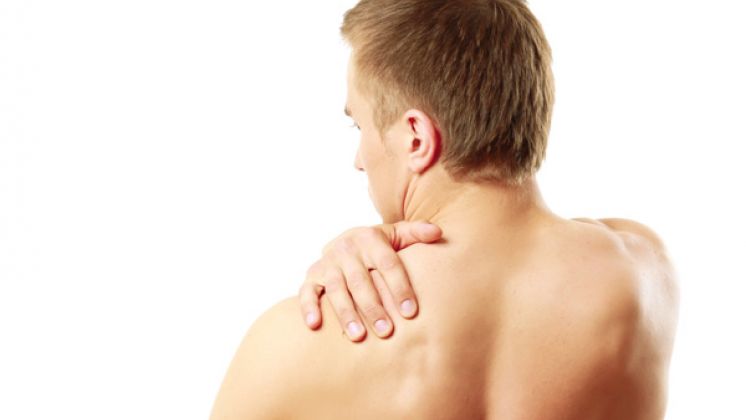How To Fix Shoulder Injuries
Top physiotherapist Lucy Macdonald explains how your shoulders work and how to protect them

The bench press, shoulder press and behind-the-neck lat pull-down are all great muscle-building moves – but they’re also moves that put pressure on your shoulder joints. The ball-and-socket joint is responsible for a huge number of movements you make when training so it’s vital to know how it works and what to do if it’s causing you any pain.
If you’re doing a lot of shoulder-sapping moves during a session, even minor weaknesses in the deeper muscles can lead to damaged cartilage, muscles, tendons, ligaments and nerves. And if your injuries and weaknesses aren’t addressed quickly they get worse until the shoulder can’t function properly. So it’s vital to have any shoulder injury properly assessed and treated before following any of the advice below.
The muscles of the shoulder can be divided into the big external movement muscles, such as the deltoids and the latissimus dorsi, and the deeper stability muscles that sit underneath them. Most people focus their training on the external movement muscles and neglect the deeper muscles that are vital for improving performance and preventing injury.
Common Injury: Subacromial Impingement Syndrome
What it feels like: Pain at the top of the shoulder that comes on gradually often after increasing training or training when tired. It’s often painful through the middle range of movement as you take your arm out to the side and then up to above your head. Try this test to see if you suffer from it but stop as soon as you feel pain: stand with your arms out in front of you as if you are hugging a huge cauldron of water. Now twist your arms so that you pour the imaginary water on the floor. If it hurts this is one of the signs of impingement.
Most common cause: Soft tissue being squashed or irritated in the space under the acromium (the bony outer point of the shoulder). This results in inflammatory fluid being produced, which reduces the amount of space for the structures to move, leading to restriction and pain.
Shoulder-Strengthening Moves
Shoulder position: It is essential to position the shoulder joint correctly to make sure you don’t do more damage. Many people naturally hold their shoulders too far forward, which puts pressure on the joint. But you can’t just pull it back to sort it out - this can actually make it worse! You need to gently lift the shoulders upwards and then very slightly backwards and down in an outward twisting motion. You then need to train the shoulder to stay in this position as you train.
Train your scapular stabilisers: Lie on your stomach with your chin tucked in and your arms out to the sides at 90˚. Move your shoulders towards your ears and then move your shoulder blades towards your spine. Lift your wrists and then your elbows, keeping your shoulder blades together, then lower everything. Do NOT do this if you have any shoulder pain.
Get the Coach Newsletter
Sign up for workout ideas, training advice, reviews of the latest gear and more.
Train your subscapularis muscle: This stabilising muscle is often weak. Get on your hands and knees with your elbows slightly bent and your head up but your chin tucked in. Keep your elbows and neck fixed in this position as you lower your sternum (breast bone), squeezing your shoulder blades together gently, and then push through your arms to separate your shoulder blades as much as you can.
Stretch the lats: These are often tight and overactive in relation to the rotator cuff muscles. Stand with your back to a wall and your palms facing forwards. Slowly slide your arms out and up towards your ears keeping them against the wall. If you struggle to get your arms up then your lats are tight. Stretch them by taking your arm up and then bending to the side to feel the stretch under your armpit.

Lucy Macdonald has been a sports physiotherapist since 2004, with experience treating professional and amateur sports people including members of the GB ski and powerlifting teams.
